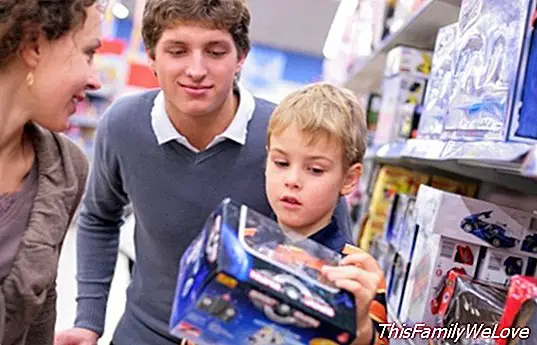The 20 most frequent mistakes in the purchase of toys


A good choice of a toy is a good investment, which contributes to the integral development of your children. The toy is only an instrument, the important thing is the game, which contributes to the integral development of your children. The Toy Industry Research Association (AIJU) has developed a document with the most frequent mistakes in the purchase of toys so that we avoid them this Christmas.
This Association indicates that there are 14 types of data in each product: name of the toy, manufacturer or distributor, recommended age, characteristics, size reference, fitness for people with disabilities (visual, auditory and motor), price orientation, type of game , psychopedagogical aspects, adequacy for the school or hospital context and for family play, in which we must look before purchasing a toy.
The 20 most frequent mistakes when buying toys
1. Do not look well at the packaging and labeling. Always look for the indications of the product, which may include warnings related to the safety, content or conditions of use of the toy.
2. Do not give importance to the safety instructions. If we ignore them we can endanger the safety of our children. It is always necessary to take them into consideration and more if the toy is for a child under 3 years.
3. Give away toys that are not appropriate for the child's age. Toys must respond to the needs of growth. They should not be too complicated or too simple. It is very common that we give children appropriate toys for more age. Do not anticipate gaming experiences, especially if they are stimulation toys, everything in time. The recommendations of age of the containers can help us to decide although, beware, they are not always well placed.
4. Give toys only according to sex. The game is free and spontaneous, and that is how adults should understand it.
5. Give away toys that transmit unwanted values. Some toys have sexist, racist, violent connotations, etc., contrary to the social and educational principles that we strive to transmit to them.
6. Choose toys that do not allow the child to play a leading role. Toys should be stimulating and allow an active attitude to the child who plays, not relegate them to mere spectators.
7. Choose instructional toys, but not fun. Toys are a good resource to learn, but they should also be fun and interesting. If they are not fun, they are not good toys.
8. Give away too many toys. You have to give enough toys, but not excessive. We will not help them by buying everything they ask but just what they need. The excessive amount of toys, provokes attitudes of caprice, boredom or contempt for toys and, often, causes disorder and lack of interest in preserving them.
9. Let yourself be carried away by advertising. Children must learn that advertising and quality do not have to be associated and that in advertising, things are not always as they seem. Parents should also be critical of it and use it to inform us, also looking for other resources.
10. Give toys only at specific times. Children not only need to play at Christmas or for their birthday. It is important to distribute the gifts of toys throughout the year, so we will maintain the enthusiasm and interest in them.
11. Stop giving toys to older children. The game is necessary for development and we have to facilitate it in all stages of childhood, not only at the beginning.
12. Do not think about toys when we have to make a gift to an adult. The enjoyment generated by the game is, by itself, enough to improve the quality of life for people of all ages. In addition, he exercises skills and strengthens learning.
13. Buy toys at surprisingly cheap prices. Quality does not mean expensive prices, but you have to be wary of products with very cheap amounts, since they are more likely to have security problems, duration, manageability, etc.
14. Acquire toys in non-specialized establishments. In responsible stores they can better inform and adequately attend to possible claims. Not always the most sophisticated products are the most enriching for children.
15. Do not take children's requests into account or strictly comply with them. It is important to listen to children and take their requests into account, but you have to know that sometimes they are excessively influenced by advertising. Discuss with them and show them other alternatives can be very useful to choose properly.
16. Always give similar toys. Although we know that a child likes a certain type of toy very much, we must try to give him a variety of products, which stimulate his development from different points of view.
17. Buy without knowing what we buy. Especially when choosing games or other complex games, sometimes we ignore the themes, content or form of the game, which may be inappropriate for childhood.
18. Decide based on our tastes. We often choose what we like or liked when we were little, but times have changed.
19. Buy impulsively and without informing us. Before deciding the purchase it is important to think which will be more appropriate in each case. Deciding without prior reflection considerably increases the chances of making mistakes.
20. Give away toys that are not appropriate for the child's age. Whether the recommended age of the toy is above or below the actual age of the child, the function of the toy will not be the same, since the game will lose interest either because of its difficulty or because of its simplicity.
Marisol Nuevo Espín




